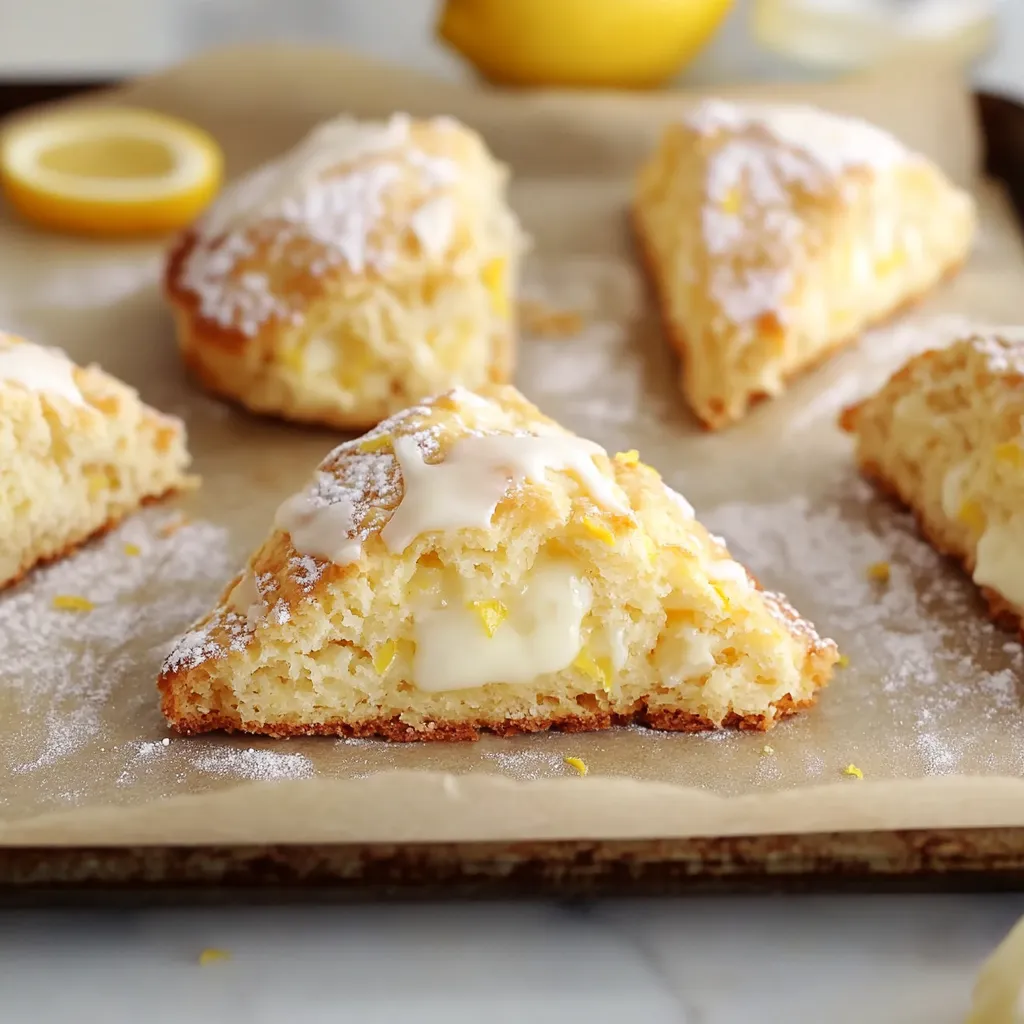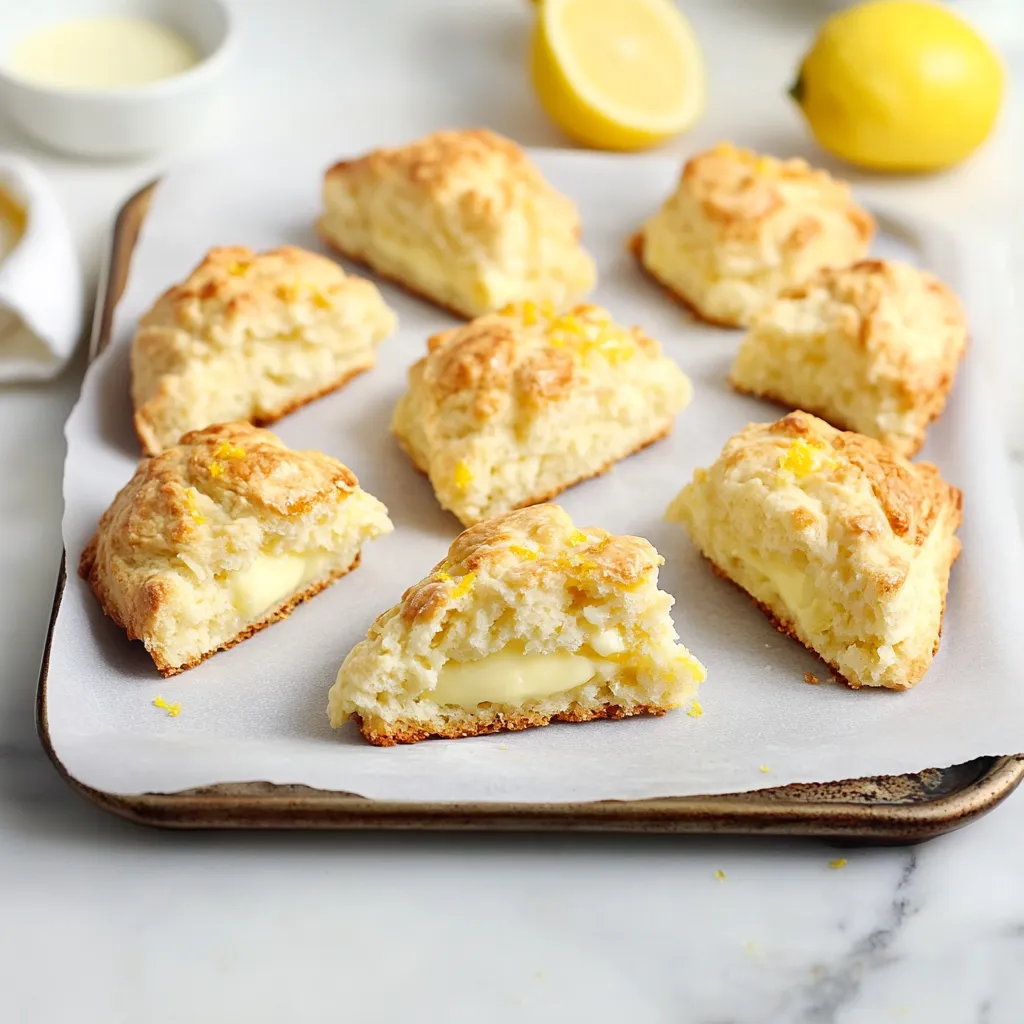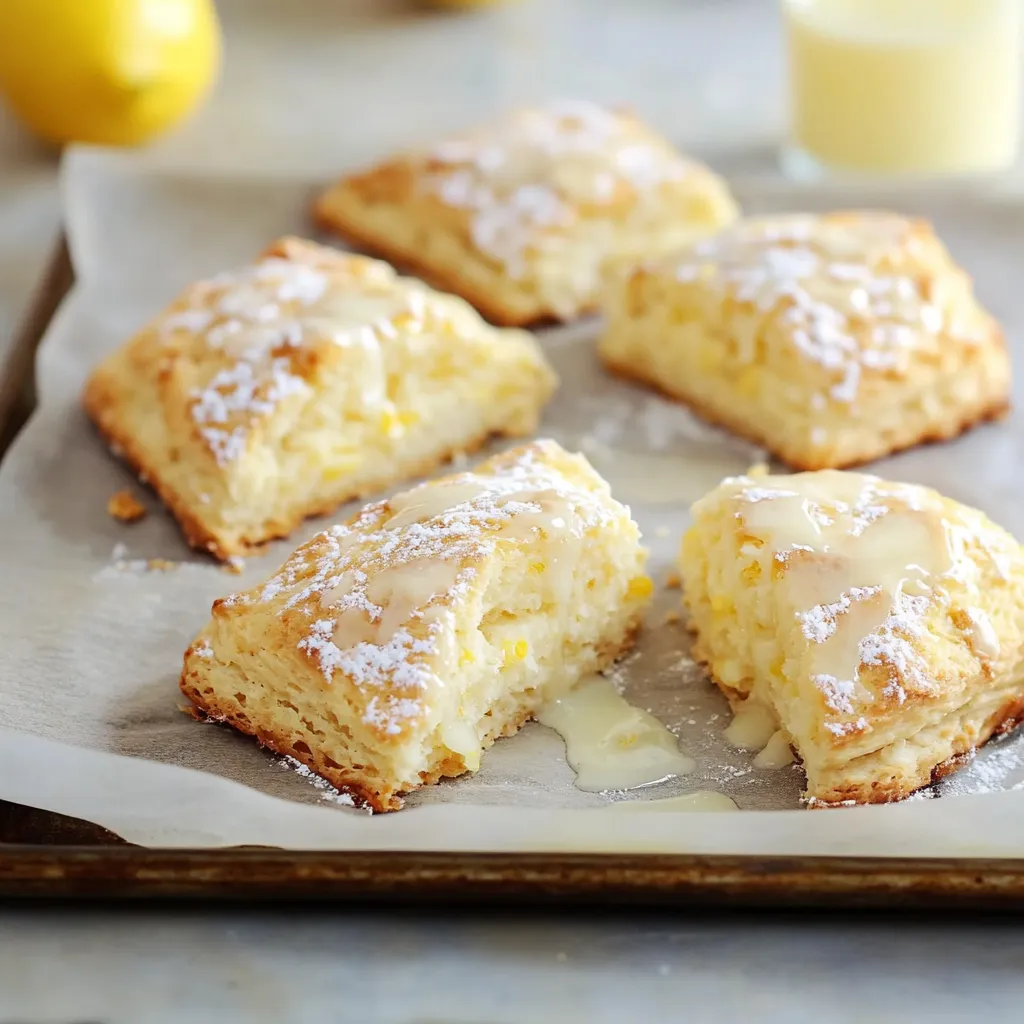 Pin
Pin
The perfect lemon scone brings a touch of sunshine to any morning - buttery, tender layers infused with bright citrus notes and finished with a tangy glaze. Through years of perfecting scones, I've discovered that creating these citrus-kissed treasures is about understanding the delicate dance between temperature, technique, and timing. Each batch teaches something new about the art of pastry making.
Last weekend, I served these at a spring brunch, watching faces light up at first bite. The secret? Understanding how cold butter and fresh citrus create perfect texture and flavor.
Essential Ingredients and Selection Tips
- Butter: Use European-style butter if possible, for higher fat content and flakier results.
- Lemons: Choose bright, heavy lemons with thin skins for maximum juice and fragrant zest.
- Cream: Use cold cream straight from the refrigerator.
- Baking Powder: Ensure it’s fresh for proper rise.

Step-by-Step Creation
- Lemon Preparation:
- Zest lemons before juicing, using light pressure to avoid the bitter pith. Massage zest into sugar to release oils for maximum flavor.
- Temperature Control:
- Keep butter, cream, and eggs cold until ready to use. Freeze butter cubes for 15 minutes before incorporating.
- Dry Ingredients:
- Whisk flour, sugar-zest mixture, baking powder, and salt. Ensure even distribution and break up any clumps.
- Integrating Butter:
- Work frozen butter into dry ingredients using a pastry cutter or fingertips until the mixture resembles coarse sand with pea-sized butter pieces.
- Mixing Wet Ingredients:
- Whisk cream, egg, and vanilla until smooth. Gently fold into the dry mixture until dough just comes together.
- Shaping the Dough:
- Turn dough onto a lightly floured surface, pat into an 8-inch circle about 1-inch thick, and cut into 8 wedges.

Pre-Bake Treatment
Freeze shaped scones for 15 minutes. Brush tops with heavy cream, then bake in a preheated 400°F oven for 18-22 minutes, rotating the pan halfway through for even browning.
Perfecting the Glaze
- Preparation:
- Sift powdered sugar to remove lumps. Gradually whisk in lemon juice until desired consistency is reached.
- Application:
- Drizzle glaze over slightly warm scones and let set for 10 minutes. Apply a second layer if desired.
Variations and Add-Ins
- Add 1 cup fresh blueberries for lemon-blueberry scones.
- Mix in 2 tablespoons poppy seeds for extra crunch.
- Replace lemon with orange or lime for citrus variations.
- Add dried cranberries for tart contrast.
Pro-Baker's Tips
- Test oven temperature with a separate thermometer.
- Rotate pan halfway through baking for even results.
- Use a bench scraper for easier dough handling.
- Keep extra flour nearby for dusting.
Serving Suggestions
- Pair with Earl Grey or English Breakfast tea.
- Serve alongside lemon curd for extra indulgence.
- Present on a tiered stand for an elegant brunch.
- Offer clotted cream as a traditional accompaniment.
Troubleshooting Common Issues
- If dough is too dry, add cream 1 tablespoon at a time.
- If too sticky, dust the work surface with more flour.
- For uneven browning, check oven for hot spots.
- If glaze is too thick, add lemon juice by drops until smooth.
Creating Tea Pairings
- Earl Grey highlights citrus notes.
- English Breakfast offers classic pairing.
- Green tea provides light contrast.
- Chamomile complements afternoon service.
Mastering Different Textures
- Achieve flaky layers through butter technique.
- Create tender crumb through gentle handling.
- Develop crispy tops with cream wash.
- Perfect glaze consistency for proper set.
Advanced Flavor Building
- Add vanilla bean to enhance lemon.
- Incorporate citrus oils for depth.
- Consider herb infusions like thyme.
- Balance sweetness with zest amount.
Understanding Ingredient Roles
- Butter creates flaky texture.
- Cream provides richness.
- Egg adds structure.
- Lemon offers brightness.
- Sugar balances acidity.
Baker's Science
- Cold butter creates steam pockets.
- Baking powder reaction timing.
- Gluten development control.
- Sugar's role in tenderness.
Creating Special Memories
- Perfect for weekend family breakfasts.
- Ideal for holiday morning traditions.
- Lovely for gifting to neighbors.
- Beautiful for celebrating milestones.
Final Baking Wisdom
Trust your instincts as they develop. Embrace the learning process. Celebrate small improvements. Share your knowledge with others.

Legacy and Tradition
The humble scone has evolved from its Scottish origins to become a beloved pastry worldwide. These lemon scones carry forward that tradition while adding bright, modern flavors. Each time we make them, we participate in this ongoing culinary evolution.
Creating Your Signature Touch
Over time, you'll develop your own special way of making these scones. Perhaps adjusting the lemon to suit your taste. Finding your perfect glaze consistency. Developing your ideal baking time. Creating your signature shape or size.
Kitchen Mindfulness
Scone-making can become a meditative practice. Focus on each step with intention. Appreciate the transformation of ingredients. Find joy in the process. Share the results with loved ones.
Extended Final Thoughts
Creating perfect lemon scones is about understanding the gentle dance between ingredients, temperature, and technique. Through countless batches in my kitchen, I've discovered that success lies not just in measuring ingredients but in developing an intuition for how the dough should feel, how the butter should look when properly incorporated, and how the scones should smell as they near perfection in the oven.
Recipe FAQs
- → Why use cold ingredients?
- Cold butter and liquids create steam while baking, resulting in flaky, tender scones.
- → Can I make these ahead?
- Yes, freeze unbaked scones and bake directly from frozen, adding a few minutes to bake time.
- → Why chill before baking?
- Chilling helps scones hold their shape and ensures they rise properly while baking.
- → Can I substitute the buttermilk?
- Mix regular milk with 1 teaspoon lemon juice and let stand 5 minutes to create buttermilk substitute.
- → How do I know when they're done?
- Scones should be golden on top and lightly browned on the bottom, about 20 minutes.
